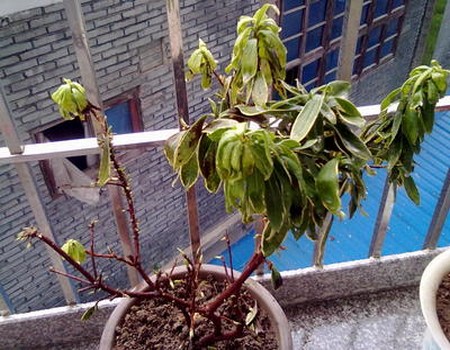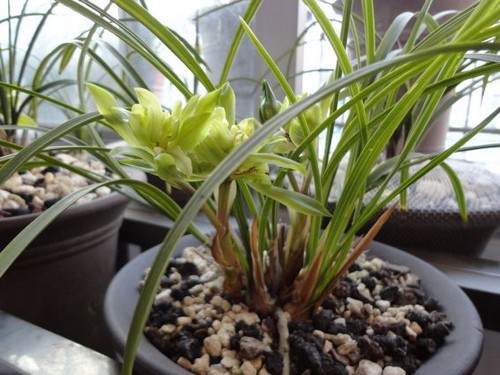How to raise spring orchids
As a lofty object in people's aesthetic appreciation, orchids become a concept after consideration and consideration. When this concept is applied to language, it becomes a word. In the long history, out of closeness and respect for Lan, people have created many beautiful words to express the beautiful things around them.

Orchids have been loved and praised by people since ancient times. The ancients praised and said, "the incense of orchid covers a country", so it has a nickname of "national fragrance". With its unique leaves, flowers and fragrance, orchids give people a very noble, elegant and beautiful image. So what we are going to introduce today is the spring orchid, which is one of the best orchids. So how to raise spring orchids? And when is the flowering time of spring orchids? Let's go into the world of spring orchids with the editor.
Spring orchids are also known as grass orchids and mountain orchids. One or two branches, long and narrow leaves, dark green flowers, light fragrance. Mostly produced in temperate zones, mainly produced in China, in Zhejiang. Jiangsu and other places to spring orchid is expensive, has a long history of cultivation, more potted, as an indoor ornamental, flowering has a particularly elegant aroma. It is a good product for indoor layout, and its roots, leaves and flowers can be used as medicine.
How to raise spring orchids?
1. The land cultivated by spring orchids must not use alkaline soil, and the soil for cultivating spring orchids had better use special orchid mud, or use a mixture of rotten leaf soil and sandy loam.
2. Spring orchids are suitable for growing in warm areas, and the suitable temperature is from 15 ℃ to 25 ℃. Good shade and ventilation are required in spring and summer, and sufficient sunshine is needed in autumn and winter.
3. The key to raising spring orchids is watering. Generally, the watering times are less in winter, the growth is exuberant in summer, and the higher temperature can be watered more. Generally speaking, Rain Water and river water are better for orchids. Tap water must be reused after entering the pool.
4. Fertilization is necessary for Chunlan. Spring and summer are in the peak period of growth, so you can apply more fertilizer once a week. The growth rate is slow in autumn, so we should apply less fertilizer once every semimonthly. You don't need to apply fertilizer when you are dormant in winter.
The florescence of spring orchids:
The flowering period of spring orchids is from February to March. If the climate is abnormal, the florescence will be postponed or bloom ahead of time. Spring orchid is a flower of great ornamental value, with enlarged petals and delicate fragrance. It is not only a good product for office or home interior decoration, but also a good helper to purify indoor air. Its price is so high that it is called the gentleman in the flower.
Warm reminder: after the spring orchid blossoms, cut the flowers together with the flowers when they are about to wither, do not wait until the flowers fall off naturally, so as to reduce nutrient consumption, which is beneficial to blossom in the coming year.
Attached: common diseases of orchid leaves
1) the leaves are yellowed and grow normally: the light is too strong.
2) the leaves turn yellow and the new buds are smaller: excessive light, lack of nitrogen fertilizer and necessary humidity.
3) yellowing and shedding of old leaves: caused by normal aging or turning over the basin.
4) Rapid yellowing and shedding of old leaves: too much watering, too often, improper pot turning and planting.
5) scorching at the tip of new leaves: excessive fertilization and unclean planting materials.
6) the focal tips of new leaves and old plants are black: excessive dampness and heat in the basin, and rotten roots in the roots.
7) after the new bud is unearthed, it stops growing again: there are rotten roots or unclean things next to the new bud, open the breeding material around the new bud, remove the unclean matter and resume growth.
8) there are scorched spots on the leaves and no yellow on the periphery: scorching spots in the hot sun.
9) there is a dipping head at the end of the leaf: the water temperature of watering is too high; the temperature is too high when watering; showers are caught in high temperature in summer, etc.
10) New bud rotten heart: after watering and pouring into the bud core, the water can not be evaporated and absorbed, and the unclean breeding material in the basin leads to leaf rot.
11) there are water immersion around the spots on the leaves: excessive humidity, basin humidity and air humidity produce asphyxiation, accompanied by leaf rot bacteria. Poor ventilation and ventilation.
12) there are chloasma on the leaves: caused by heat at the roots.
13) there are irregular maculae on the leaves, mesophyll tissue necrosis and depression: viral disease, also known as "Balas".
14) there are small yellow spots on the leaves: caused by beetles.
15) the leaves appear purple-black, and the back of the leaves is still green: caused by low temperature frost. Lack of phosphate fertilizer can also occur.
16) Leaf dehydration, pseudocorm crepe: caused by long-term over-drying and dehydration in the basin.
Time: 2019-06-01 Click:
- Prev

Phnom Penh Daphne leaves wilted, how to lose the leaves?
The flower color of Phnom Penh Ruixiang is soft and natural, the flower fragrance is elegant and fragrant, it is one of the flower varieties that decorate and beautify the home environment. Phnom Penh Daphne is our very common plant, potted planting is good to beautify the living room and study, but pay attention to maintenance. The loss of leaves in Phnom Penh is often caused by improper maintenance.
- Next

Culture methods of spring orchids
Spring orchid is a very valuable orchid variety, with beautiful, noble, simple, virtuous, virtuous, elegant and other moral symbols, can be given as a gift to friends and so on. Spring orchid is a famous variety of flowers, which can be used in the middle of home to decorate and beautify the house. it can also be used as medicine and given to friends as gifts
Related
- Fuxing push coffee new agricultural production and marketing class: lack of small-scale processing plants
- Jujube rice field leisure farm deep ploughing Yilan for five years to create a space for organic food and play
- Nongyu Farm-A trial of organic papaya for brave women with advanced technology
- Four points for attention in the prevention and control of diseases and insect pests of edible fungi
- How to add nutrient solution to Edible Fungi
- Is there any good way to control edible fungus mites?
- Open Inoculation Technology of Edible Fungi
- Is there any clever way to use fertilizer for edible fungus in winter?
- What agents are used to kill the pathogens of edible fungi in the mushroom shed?
- Rapid drying of Edible Fungi

